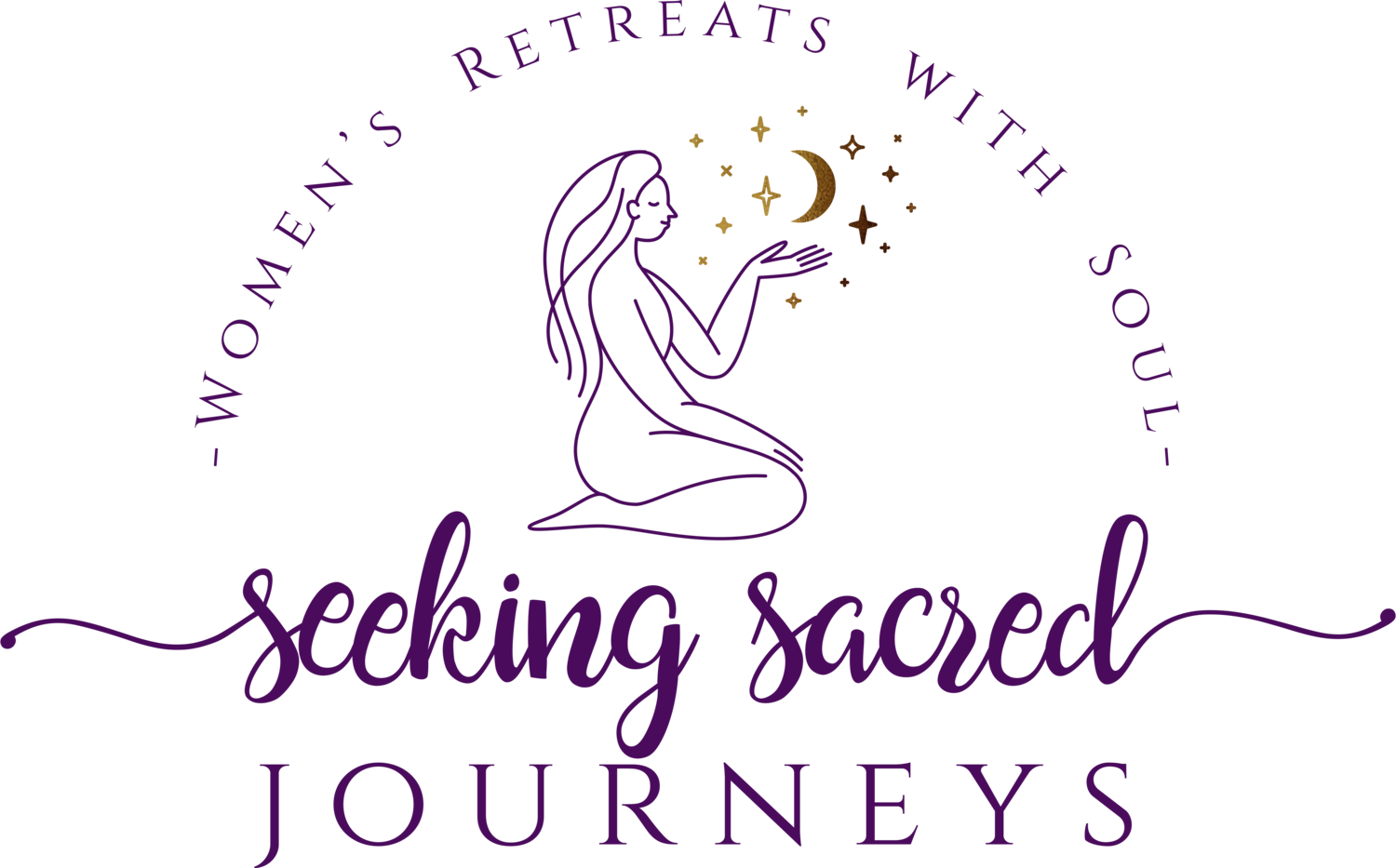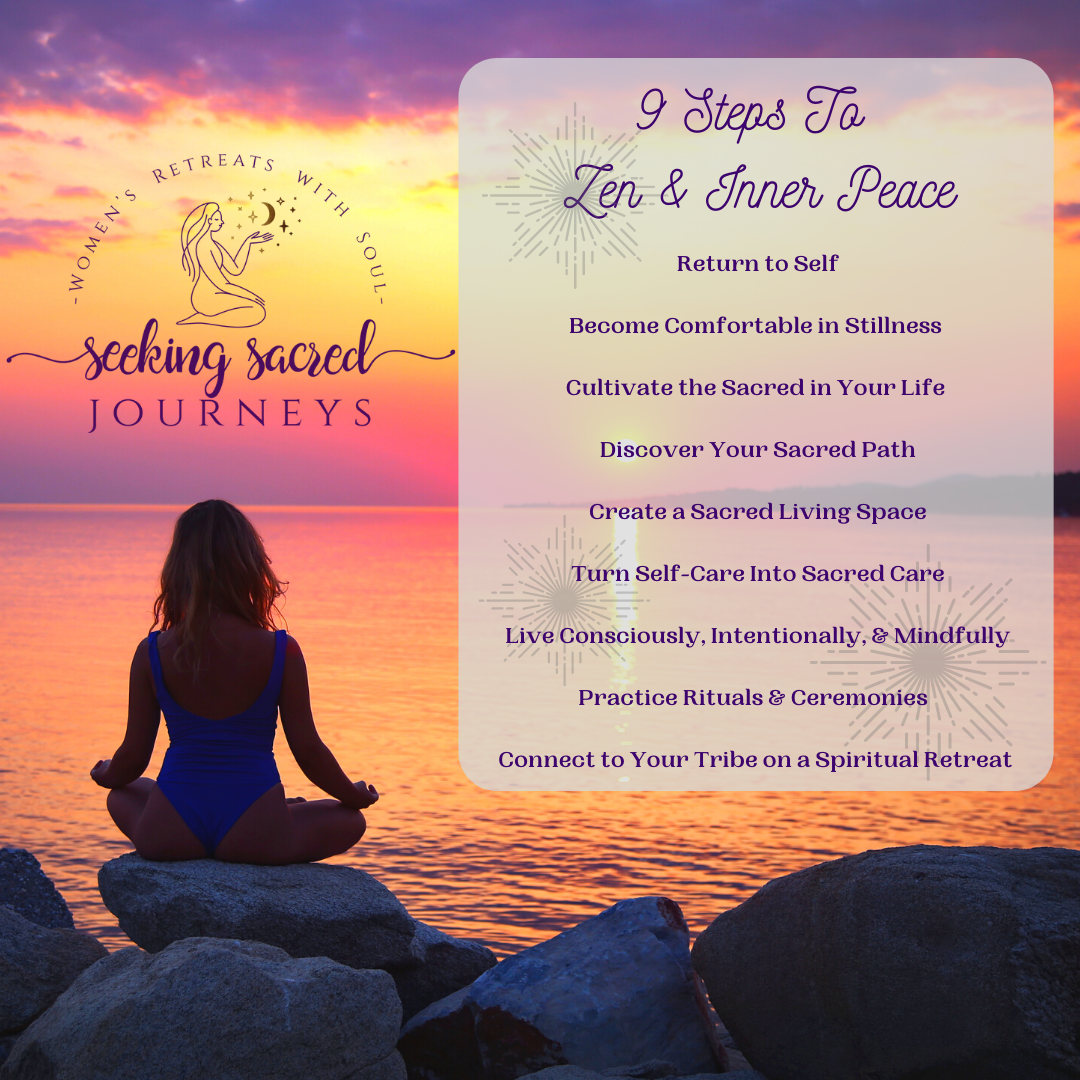9 Steps to Zen and Inner Peace
“Everything you see exists together, in a delicate balance,” Mufasa explains to his young cub Simba in the Disney movie, The Lion King. In the past, our ancestors lived according to this equilibrium.
Although we have come a long way in terms of innovation, we have also lost touch with our true selves and the delicate balance with nature. And, when you go against the way of nature, you swim against the current. You struggle. You fight. You drown.
What if you simply laid back and allowed yourself to float? Then you flow effortlessly with the current, in peaceful zen.
Zen is a state of calm awareness in which your actions are guided by the flow of intuition rather than by conscious effort. Are you ready to restore balance and live in the flow state, nature’s way of deep inner peace? Follow these 9 steps to zen and begin your path to creating a state of balance and tranquility.
A moment of pure bliss, Machu Picchu, Peru 2021
Step 1: Returning to self
Your path to zen starts by going inward. It means to re-establish your connection with your true self, the divine source that flows through each of us. You begin to look beyond the veil of illusion and open yourself to spiritual bliss.
This journey back to the self takes time. But like every journey, it begins with one small step forward. You recognize that you seek something bigger. You open your heart to love. You feel ready to listen to the voice guiding you from within calling you to zen.
Step 2: Become comfortable in the stillness
The modern pace of life feels a lot like running on a hamster wheel that never stops spinning! Stillness—the simple act of not doing anything—will help you break free from that cycle and create the zen state.
Nourishing Yoga Nidra balances the nervous system and allows the body to rest deeply. (Peru 2021)
Here are a few simple ways to create stillness in your life:
Listen to guided meditations
Practice breathwork exercises and/or remember to breathe
Go on walking meditations
Spend time in nature
Release your thoughts with daily journaling
Practice mindfulness meditation
Step 3: Cultivate the sacred in your life
Cultivating the sacred means consistent effort to build a relationship with the divine. Creating the sacred in your life can mean daily rituals that help connect to your highest self. It can mean setting aside time for prayer or meditation. It can mean dedicating a full month of the year to the sacred. Everyone’s path to the sacred will look different!
Think of the path to the sacred like a mountain, with many trails that lead upward to that same point at the top. Your path to the pinnacle probably won’t look the same as the next person. The trick: to find those rituals that bring you higher, and to continue to practice those sacred steps as you ascend.
On her Sacred Journey, an attendee pauses to soak in the high vibe of Peru
Step 4: Discover your sacred path
You may already practice sacred rituals in your life, perhaps from your religious upbringing or customs you learned on the road to life. Whichever the case, you don’t need to feel limited to what you already know when developing your zen. It’s personal, and you can always experiment with sacred rituals that make your soul sing.
Developing the sacred can come in all forms. It doesn’t just mean going to a house of worship for formal prayer, although it certainly can! A sacred moment can mean a long hot bath in essential oils, a morning prayer, a weekly yoga class, a spiritual retreat. Open your heart to experimenting with many types of sacred rituals to illuminate your path toward spiritual ascension.
Step 5: Create a sacred living space
A comfortable and creative living space sets the foundation for living a peaceful life that everyone can follow and adapt to their preferences.
A crystal energy grid like this one we use in ceremony can raise the vibration of your living space, clear blockages and help calm the mind.
To create a peaceful living space, try out some of the following easy tips:
Energetically cleanse your home: Consistently keep your living space tidy, clean and remove dust, and burn sage and incense to clean the area energetically.
Position furniture (like sofas and beds) to face entrances and doorways, to open your life to opportunity and abundance.
Create an inspirational living space, full of art and photographs.
Consciously choose colors and materials that evoke a certain mood. Choose calming blues in rooms for quiet reflection, or uplifting oranges and yellows in social spaces.
Use the five elements (earth, fire, water, metal, and wood) to infuse their properties into the living space. If you lack stability, earth materials, like wood, help you feel more grounded. When you feel unorganized, add metal elements to inspire clarity and precision. When you feel uninspired, add candles and incense to spark passion.
Create a shrine or altar in your home where you can touch base with the divine and nourish a zen state.
Design a sacred space for meditation, yoga, journaling, reading, or relaxing. Choose colors, fabrics, essential oils, and incense that bring a sense of calm.
Step 6: Turn self-care into sacred care
Self-care means any activity to deliberately care for your spiritual, mental, emotional, and physical health. At its most basic, self-care is about self-respect. It means caring for yourself and declaring to yourself and to the world that you are worthy.
Sacred self-care ideas:
Book a nature spa treatments
Soak in a long hot bath or hot spring
Treat yourself to healthy, delicious foods
Take breaks and give yourself time to rest
When you make these consistent efforts, you work toward becoming the best person that you can be. You show up to the world, embodied in your power. You create an energy of healing—healing of the self leads to healing of humanity, healing of nature, healing of Mother Earth, healing of the universe.
Step 7: Live consciously, live intentionally, live mindfully
Living the zen way means living consciously. Through awareness, you reconnect with your true self and develop an inner state in balance with nature.
An attendee takes a moment to connect with the essence of this Peruvian flower (2021)
Ways to live consciously:
Practice mindful awareness
Breathe deeply and consciously to allow the prana life force to flow through you fully.
Respond rather than react: Take the reins. Through mindfulness, you learn to pause when you feel emotions or thoughts come up. Notice your experience. Feel that moment. Then respond calmly.
Practice mindful consumption. Turn a meal into meditation. When you cook, notice the sensations and appreciate the path of the food from the farm to your kitchen. Savor every bite. Feel gratitude for this life energy that sacrifices so you can survive.
Look for ways to apply mindfulness into all areas of your life.
Step 8: Practice rituals and ceremonies
Rituals and ceremonies are a set of actions meant to produce a desired outcome. Humans have practiced rituals well before recorded history, to connect with the Gods and Goddesses, to celebrate life and love, even to make it rain.
The Shaman’s Altar - Peru 2021
A ritual can be something traditional that you practice customarily in your culture or religion. Perhaps, you designate the weekend as a time of rest on the Sabbath by lighting candles, feasting, or spending down time with family.
Look for ways to incorporate rituals into your life, familiar or foreign, particularly ones that invite peace and zen. That can mean a morning ritual, like a morning Sahana to set the tone for a peaceful day. Perhaps you set aside a weekend each month of yoga, health, and self-care Create zen rituals in your life. When you do, you set your intention and invite peace and tranquility.
Step 9: Connect to your tribe on a spiritual retreat
In Buddhism, the word sangha means “bring together”. It is a community of friends practicing spiritual growth together. Going on a spiritual retreat is a chance to find your sangha, to connect with like minded souls on the same path to zen.
The work of spiritual peace begins inward, but it shouldn’t be done entirely alone. Immersed in a sacred space, in a soul-stirring landscape, you spend time with your tribe. A retreat is a chance to be authentic and take off the mask. You connect with teachers, friends, mothers, and sisters who can support you along your journey to inner peace and zen.
Morning practice provides an opportunity to start the day with clarity, vitality and serenity.
We are all connected, and the soul has a deep-seeded need for connection in order to feel at peace. Ready to experience your next step to zen? Book a spiritual retreat with Seeking Sacred Journeys, and raise your awareness to reach that peak of spiritual ascension.








